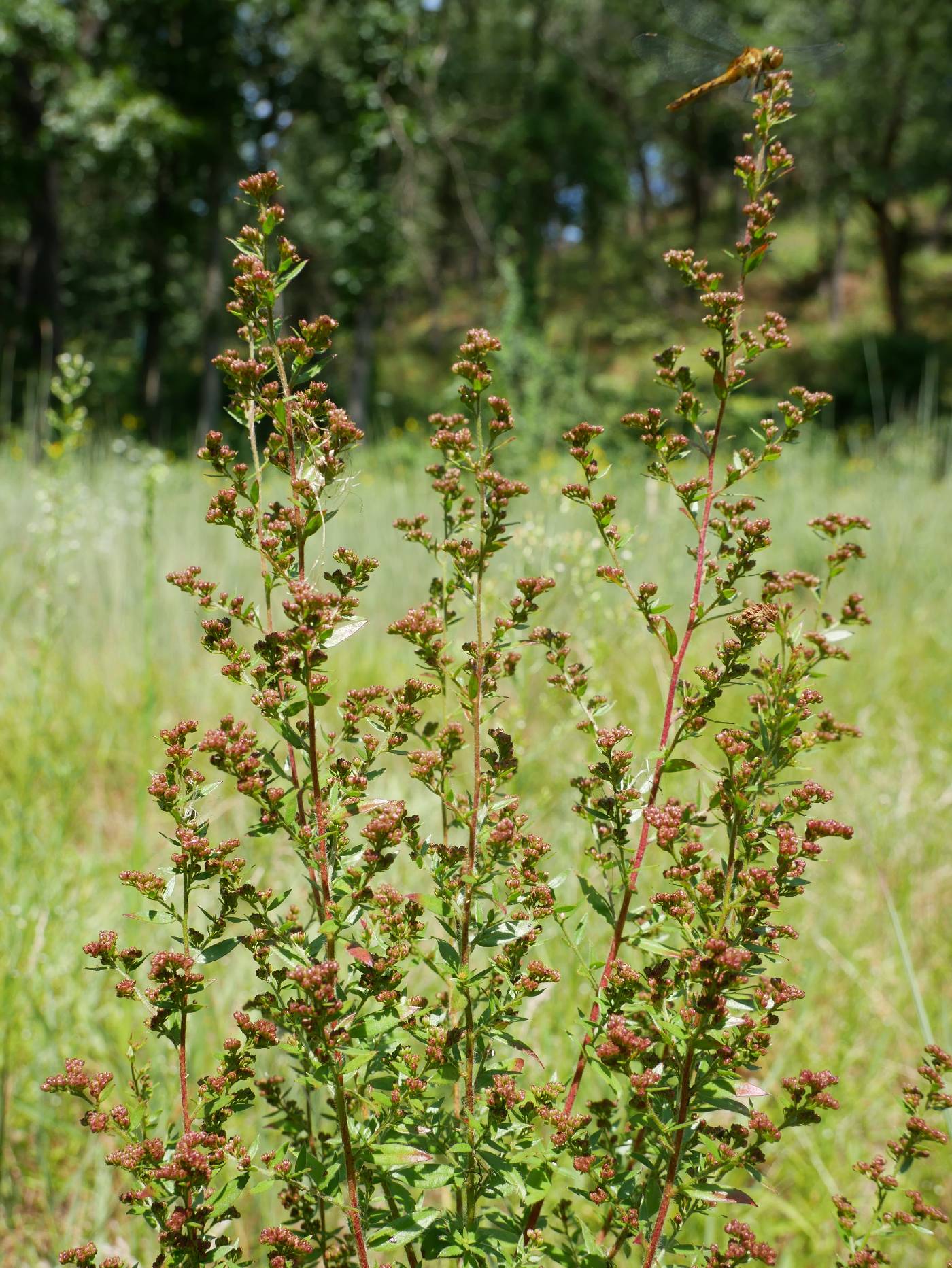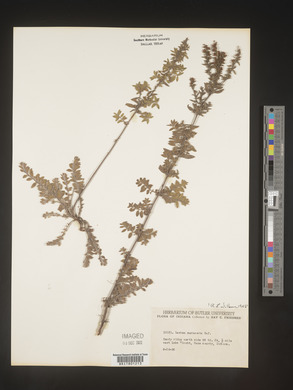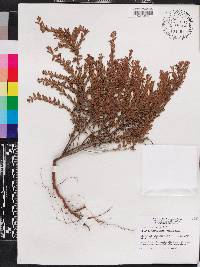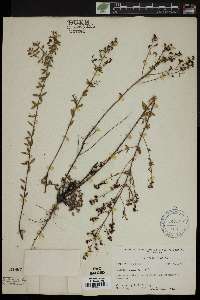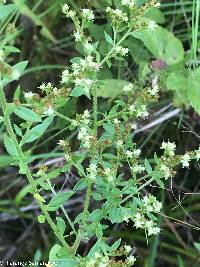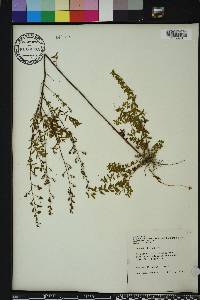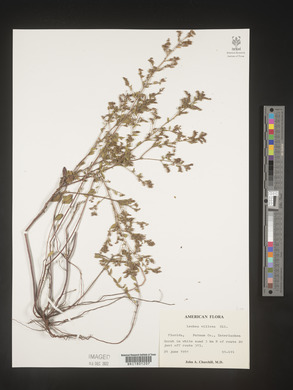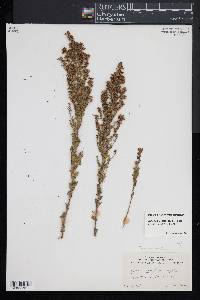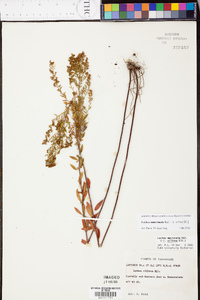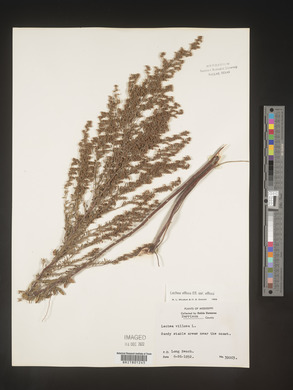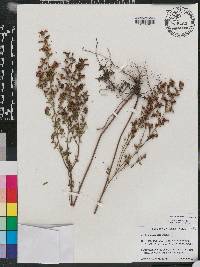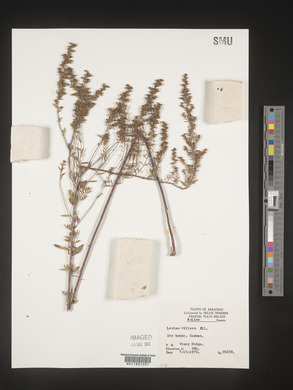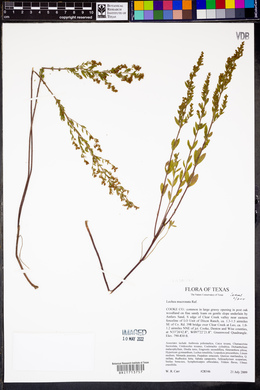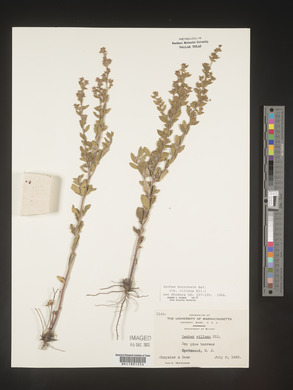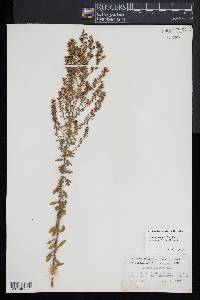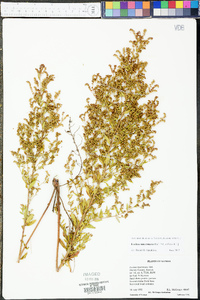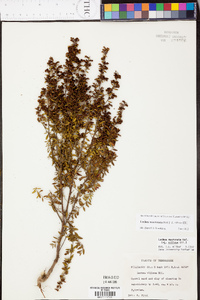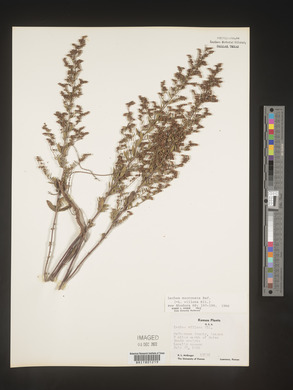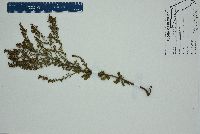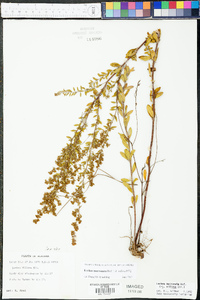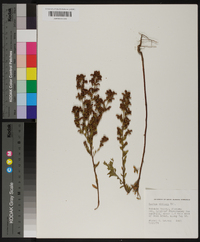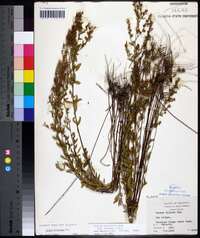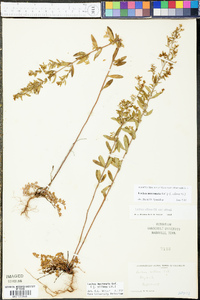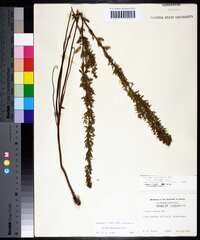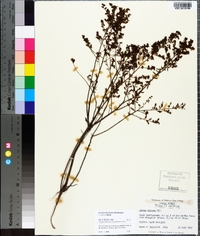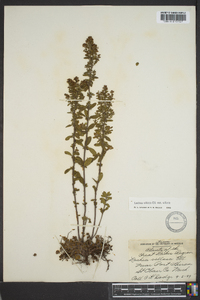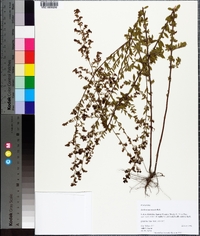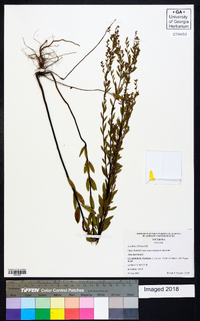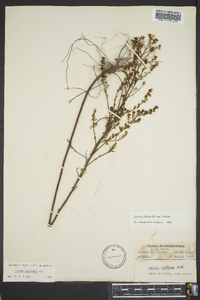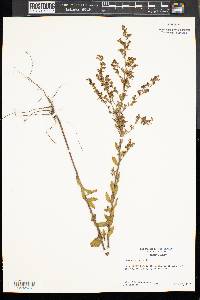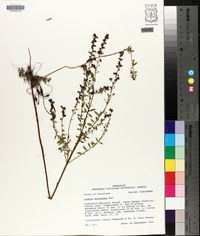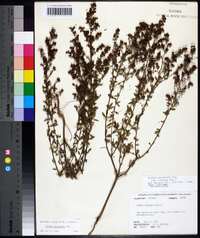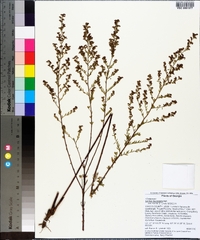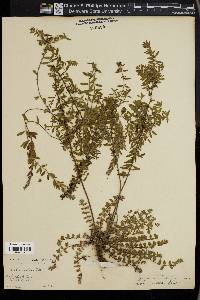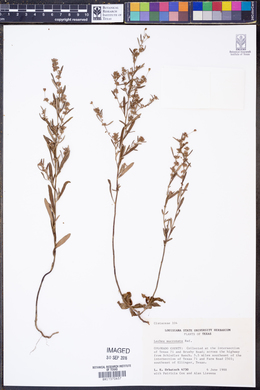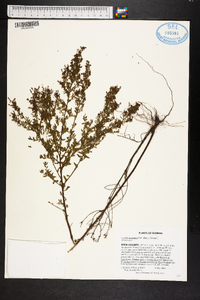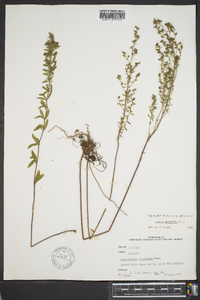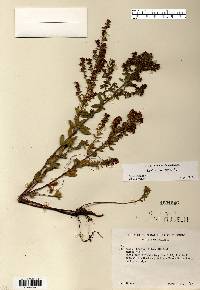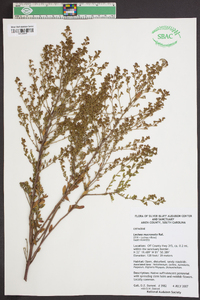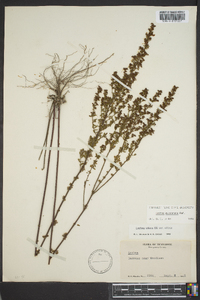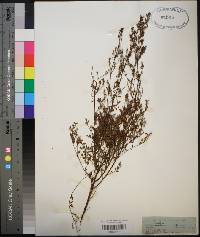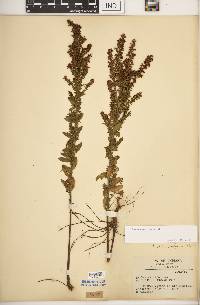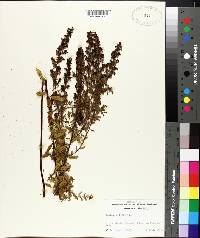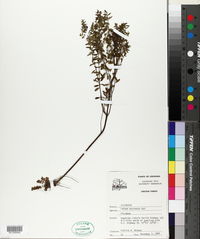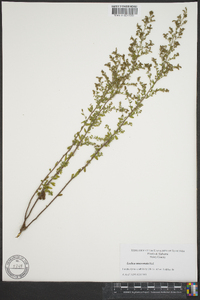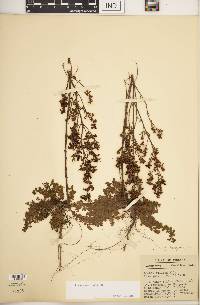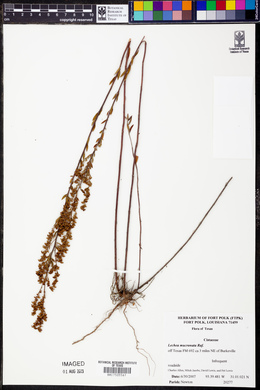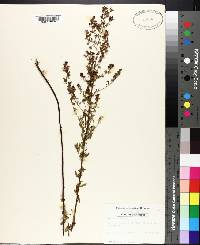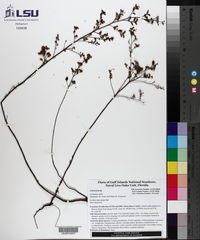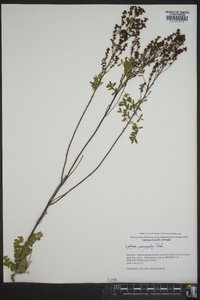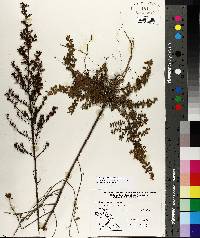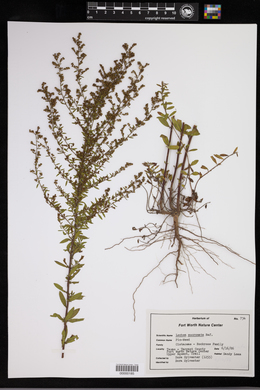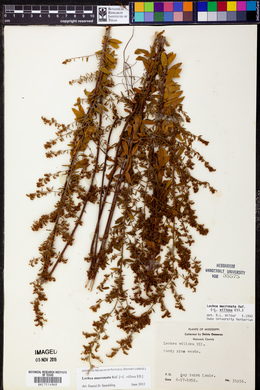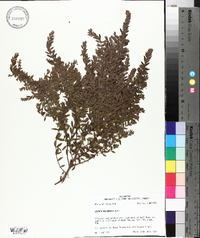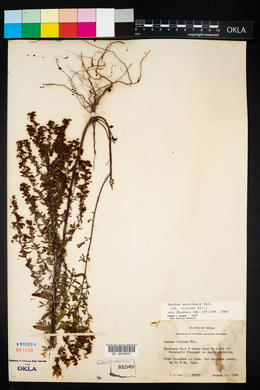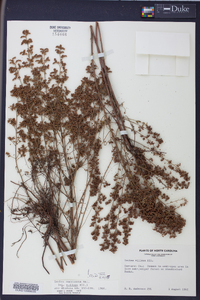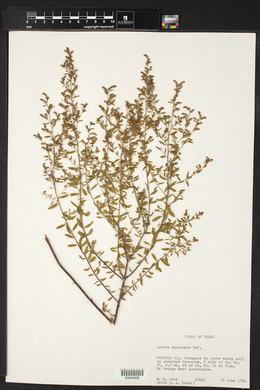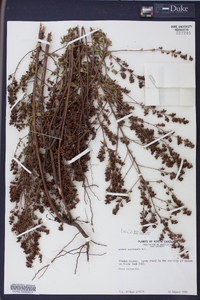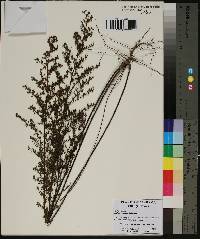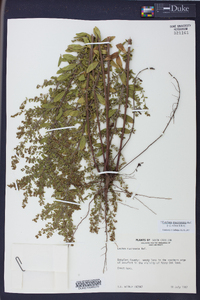
|
|
|
|
Family: Cistaceae
Hairy Pinweed
[Lechea minor var. villosa (Elliott) B.Boivin, moreLechea villosa Elliott, Lechea villosa var. macrotheca Hodgdon, Lechea villosa var. schaffneri Hodgdon, Lechea villosa var. villosa] |
Perennial herb 20 - 90 cm tall Stem: one to few, erect, unbranched below inflorescence, brownish purple, with long, spreading hairs. Late in the season producing low, sprawling, basal shoots up to 10 cm long, with numerous, crowded leaves. Leaves: many, alternate or some whorled, stalkless, bright green, 1 - 3 cm long, narrow, lance-shaped to elliptic, non-toothed, one-nerved, mostly hairless except for long, spreading hairs on underside along midvein and edges. The leaves on the later produced basal shoots differ from the upright stem leaves by being much more crowded, shorter (only to 1.5 cm), and more egg-shaped. Inflorescence: terminal, relatively large, somewhat open, finely leafy, with many ascending branches and short lateral branches. The short lateral branches end in numerous, tight clusters of tiny (under 3 mm tall), almost stalkless, reddish, non-showy, radially symmetric flowers. Sepals: brownish, five, but in two series, with outer two much narrower than the wide inner three, though all of similar length (1.3 - 1.6 mm) and longer than petals. The two outer, narrowly lance-shaped sepals are rough and may also have some longer hairs, but the three inner, broadly egg-shaped sepals are fairly smooth except for a green, roughened, sometimes sparsely hairy, raised, lengthwise ridge (keel) on their outer surface. Petals: three, mostly concealed by sepals, reddish, small, and rarely expanding. Stamens: typically five to twenty, with short anthers on relatively long, slender filaments. Pistil: with one, single-chambered, superior ovary; no style; but three, feather-like stigmas. Fruit: very short-stalked, usually three-seeded, single-chambered, three-valved, almost spherical capsules which are almost enclosed by the persistent inner sepals. Seeds: usually three per capsule, lustrous, bright brown to clear yellow, and released when top of capsule opens down the three lengthwise valves. Similar species: Lechea mucronata is quite similar to L. tenuifolia, L. minor, and L. racemulosa, except those species normally have appressed or very strongly ascending hairs on the stem, and the inner three sepals are hairy and very rarely ridged or keeled. The first two species further differ in that their two outer sepals are often longer then the inner three sepals. Other species of Lechea in the Chicago Region typically have much shorter outer sepals which are barely half the length of the inner three sepals. Flowering: July to September Habitat and ecology: Occasional, found in sterile acidic sand flats, sandy prairies, as well as old sandy fields. Occurence in the Chicago region: native Notes: This species is also often known under the name Lechea villosa Ell. Etymology: Lechea is named after John Leche (1704 - 1764), a Swedish botanist. Mucronata is Latin for "with a short tip". Author: The Field Museum Stems 2-8 dm, spreading-villous; lvs villous beneath on the margins and midvein, otherwise glabrous or nearly so, often some of them whorled, those of the basal shoots ovate-elliptic, to 15 mm, the cauline ones lanceolate to oblanceolate or elliptic, 1-3 cm; fls densely aggregated on short lateral branches; inner sep very concave, smooth except for the broadly linear, roughened, sometimes sparsely hairy keel; outer sep rough, sometimes pilose, about equaling the inner; fr subglobose, about equaling the cal. Fields and open woods in dry or sandy soil; N.H. to Mich., Ill., Mo., and Okla., s. to Fla. and Tex. (L. villosa) Gleason, Henry A. & Cronquist, Arthur J. 1991. Manual of vascular plants of northeastern United States and adjacent Canada. lxxv + 910 pp. ©The New York Botanical Garden. All rights reserved. Used by permission. From Flora of Indiana (1940) by Charles C. Deam In dry or moist, sandy soil, generally on open, wooded slopes or crests of black oak and chestnut oak ridges and on low dunes or in interdunal flats. Infrequent in the lake area, rare in the knob area, and probably absent from most of the central counties of the state. It was no doubt present in some of the prairies of the central counties but these are now all under cultivation. …… Indiana Coefficient of Conservatism: C = 7 Wetland Indicator Status: N/A |
|
|
|

